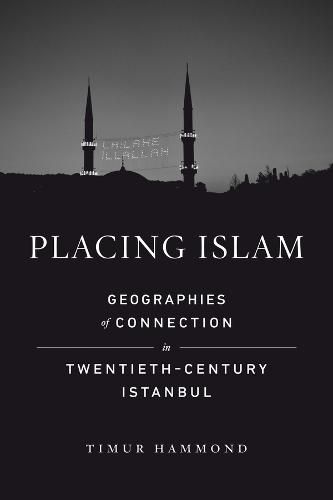Readings Newsletter
Become a Readings Member to make your shopping experience even easier.
Sign in or sign up for free!
You’re not far away from qualifying for FREE standard shipping within Australia
You’ve qualified for FREE standard shipping within Australia
The cart is loading…






A free ebook version of this title is available through Luminos, University of California Press's Open Access publishing program. Visit www.luminosoa.org to learn more.
For centuries, the Mosque of Eyuep Sultan has been one of Istanbul's most important pilgrimage destinations, in large part because of the figure buried in the tomb at its center: Halid bin Zeyd Ebu Eyub el-Ensari, a Companion of the Prophet Muhammad. In this book, however, Timur Hammond argues that making a geography of Islam involves considerably more than this figure alone. Tracing practices of storytelling and building projects from the final years of the Ottoman Empire to the early 2010s, Placing Islam shows how different individuals and groups articulated connections between people, places, traditions, and histories to make a place that is paradoxically defined both by powerful continuities and a radically reconfigured relationship to the city and world beyond. This book provides a rich account of urban religion in Istanbul, offering a key opportunity to reconsider how we understand the changing cultures of Islam in contemporary Turkey.
$9.00 standard shipping within Australia
FREE standard shipping within Australia for orders over $100.00
Express & International shipping calculated at checkout
A free ebook version of this title is available through Luminos, University of California Press's Open Access publishing program. Visit www.luminosoa.org to learn more.
For centuries, the Mosque of Eyuep Sultan has been one of Istanbul's most important pilgrimage destinations, in large part because of the figure buried in the tomb at its center: Halid bin Zeyd Ebu Eyub el-Ensari, a Companion of the Prophet Muhammad. In this book, however, Timur Hammond argues that making a geography of Islam involves considerably more than this figure alone. Tracing practices of storytelling and building projects from the final years of the Ottoman Empire to the early 2010s, Placing Islam shows how different individuals and groups articulated connections between people, places, traditions, and histories to make a place that is paradoxically defined both by powerful continuities and a radically reconfigured relationship to the city and world beyond. This book provides a rich account of urban religion in Istanbul, offering a key opportunity to reconsider how we understand the changing cultures of Islam in contemporary Turkey.